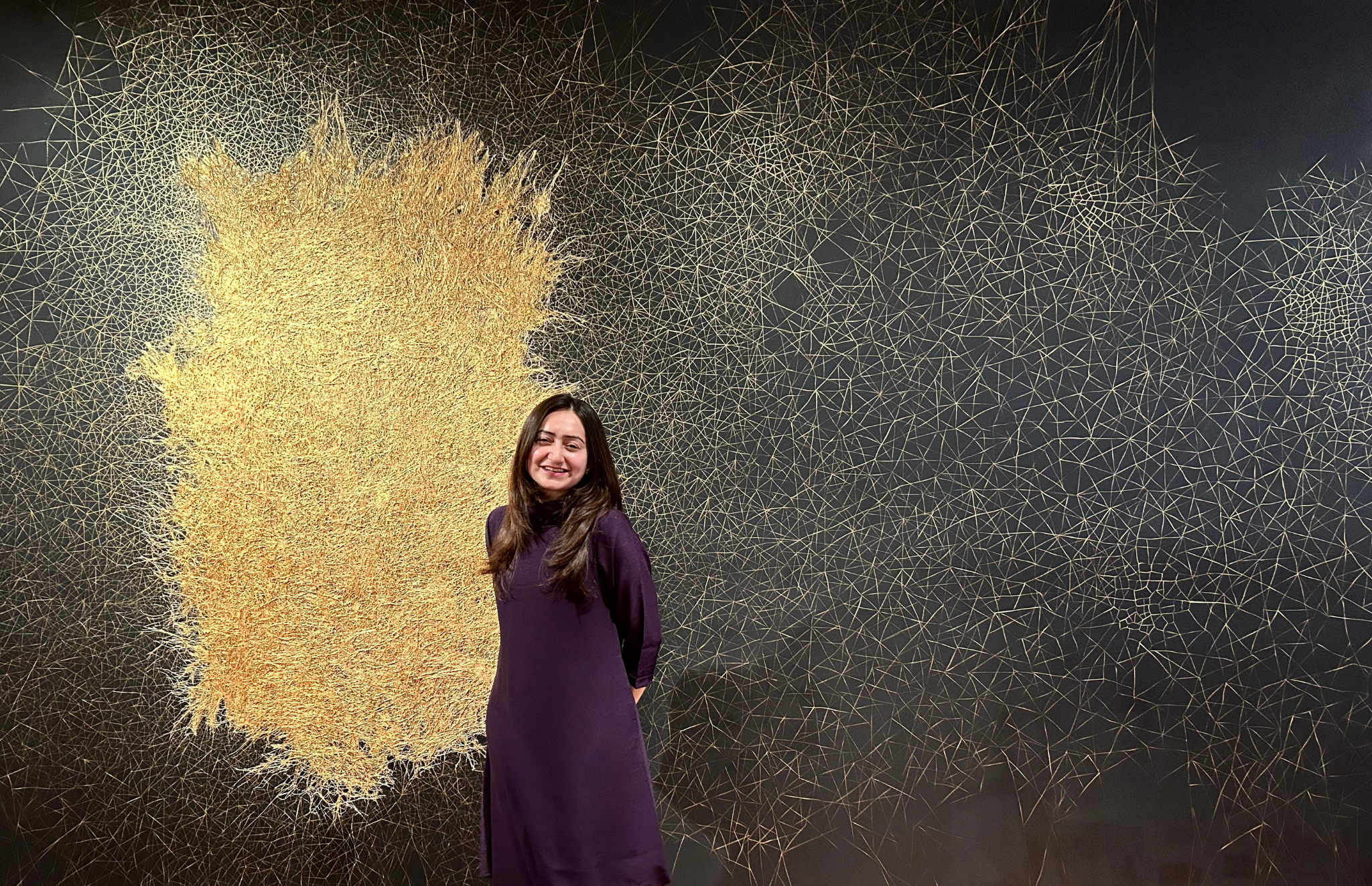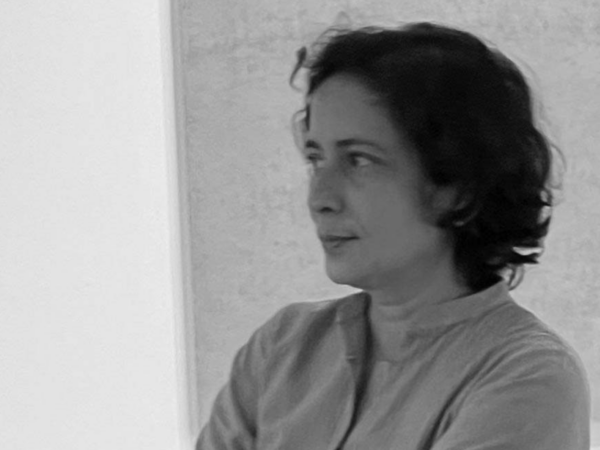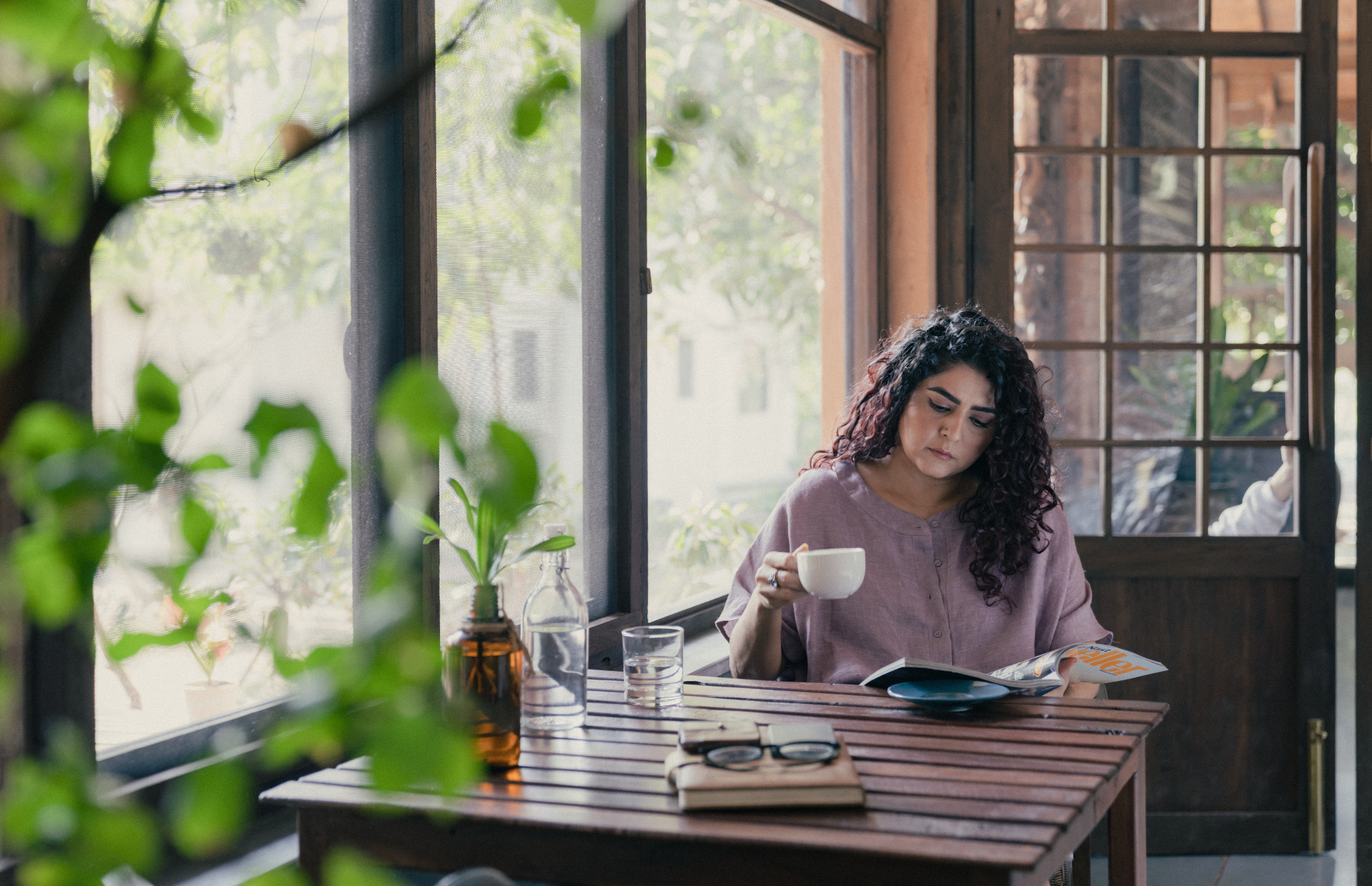Trishla Jain is a self-taught artist deeply rooted in the practice of meditation and mindfulness. She grew up in New Delhi and currently lives in Palo Alto, California. Her educational journey began with a BA in English Literature from Stanford University. Over time, her artistic practice became a reflection of her spiritual journey, and her canvas a meditation in itself. Her work has evolved from mixed-media assemblages of found objects into abstract, breath-aware compositions that seek to create a universal space for peace and mindfulness. Art, for her, is both a deeply personal and a collective experience, one that offers a place for stillness and presence amidst the noise of daily life.

Photo courtesy: Trishla Jain
SP: What kind of challenges did you face in terms of creating your style and voice as a self-taught artist? How did those challenges alter your artistic path?
TJ: Early on, I knew that I wanted my work to reflect my deep devotion to the spiritual path of self-realisation. In the beginning, that took the form of exploring joy and gratitude on the canvas — concepts that aligned with my spiritual growth at the time.
But as my spiritual practice deepened, I began to wrestle with a more profound question: how can I capture the depth of the meditative experience on the canvas without being representational? This question led me into a long period of reflection and creative silence. The process of translating something as intangible as meditation into a visual language became increasingly elusive. I found myself in a state of wonder, unsure of how to express that depth, and as a result, I didn’t produce or show any work for an extended time. Eventually, though, the answers started to surface organically, guiding me toward a more abstract, minimalistic approach that now characterises my work.
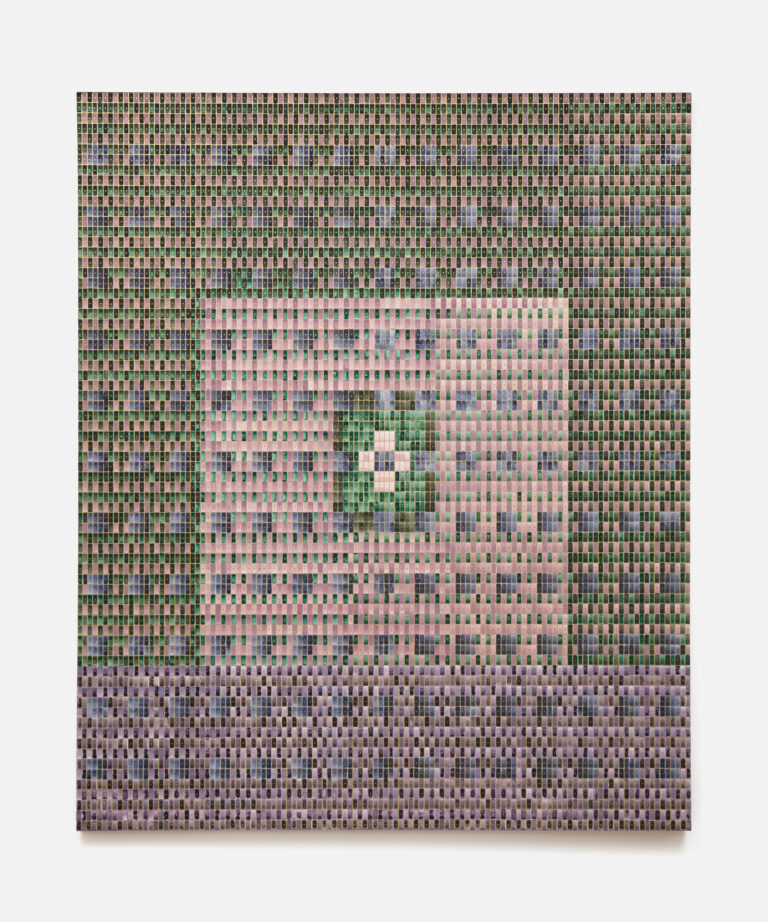
Photo courtesy: Trishla Jain
SP: In your early works, you used text, images, and found objects. What led you to incorporate these diverse materials to narrate the story of the self? Do you feel that your current abstract approach still carries an autobiographical element, or has it become more universal?
TJ: In my early works, I used found objects collected from personal correspondence, flea market trips, and even forgotten cities. These materials allowed me to tell a story of consciousness — though a more individualised one at the time. Each object carried a history and a personal connection, acting as metaphors for fragments of the self. They helped me explore the intersection of memory, identity, and experience in a tangible way.
My current approach has evolved into something more abstract, yet it is still autobiographical in a subtle sense. Today, I depict the process of breath awareness on canvas, and in that way, my work serves as a literal document of a mindfulness practitioner’s journey. However, it has also become infinitely universal. The space of awareness I explore is accessible to everyone, and the resulting work offers viewers an opportunity to connect with their own mindfulness journey. Through these meditative pieces, I hope to create a space that perpetuates peace and stillness, not just for myself but for anyone who engages with the work.
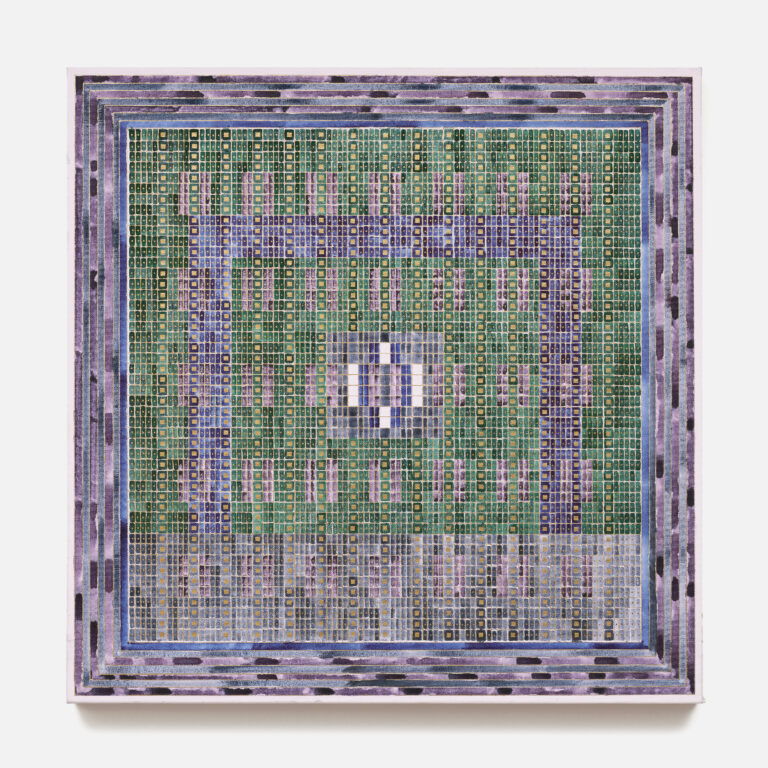
Photo courtesy: Trishla Jain
SP: Since your artistic practice is hugely informed by spiritual practice, is there a piece of work that awakened you or helped you get to a certain place of inner peace?
TJ: One piece that has profoundly influenced my practice is The Radiance Sutras by Lorin Roche. It’s a contemporary interpretation of the ancient Vijnana Bhairava Tantra, a collection of 112 meditations that explore the nature of consciousness and the sacredness of everyday experiences. I fell in love with this manuscript because it speaks directly to the heart of my spiritual and artistic journey. The sutras are poetic, rich with imagery, and deeply meditative, offering ways to experience the divine in the ordinary.
I often open The Radiance Sutras to a random page, letting the passage before me be the seed from which a painting is born. Each passage is like a portal into mindfulness, grounding me in the present moment while also guiding my creative expression. One of my favourite passages says:
“The One Who Is at Play Everywhere says,
There is a space in the heart where everything meets.
Come here if you want to find me.
Mind, senses, soul, eternity – all are here.
Are you here?”
This speaks to the essence of my work — the idea of creating space on the canvas where breath, mindfulness, and awareness can converge. The meditations in The Radiance Sutras are not only a guide to my inner peace but also the framework that underpins much of what I create on canvas.
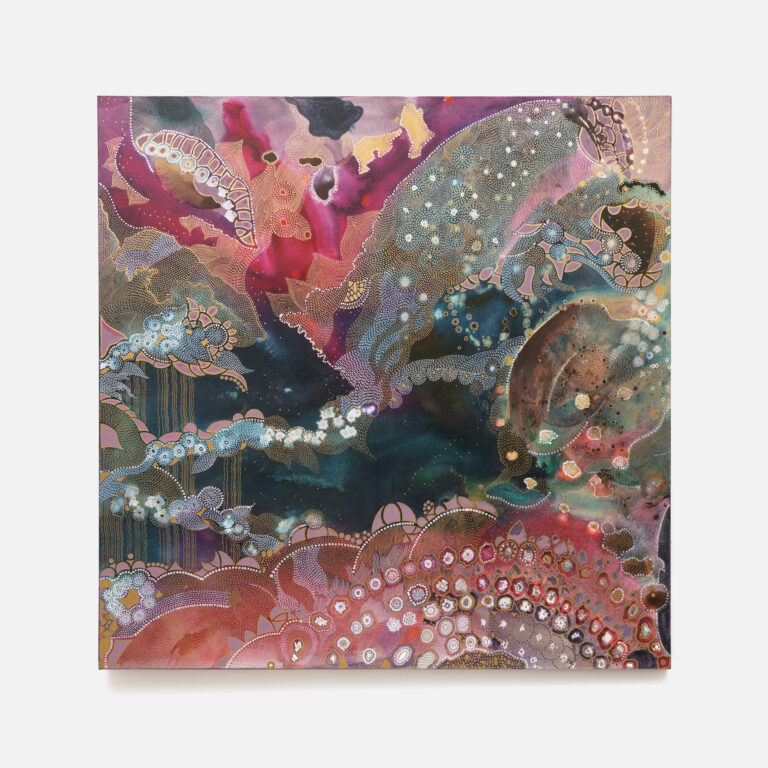
Photo courtesy: Trishla Jain
SP: What do the square geometric works in the art you do mean, in particular? Do you feel that there is a more subtle meaning behind the colour scheme you use?
TJ: The square geometric works in my art are deeply tied to the concept of Samādhi, the fruit of meditative absorption. Samādhi builds over five stages, known as the jhanic factors, which serve as the visual architecture of my pieces. Each factor is represented by a specific element in the composition: horizontal lines symbolise vitakka (the initial application of awareness on the breath), vertical lines represent vicara (sustained awareness), intersecting lines depict piti (the spontaneous arising of rapture and joy), dots signify sukha (easeful contentment), and when all of these elements come together, they represent ekaggata (the gathered, unified mind).
This interplay of lines and dots mirrors the meditative journey toward Samādhi, as each stage flows into the next, creating a balanced and contemplative visual experience. The restrained artistic repertoire of lines and dots serves as both a reflection of simplicity and an embodiment of the complex inner process of mindfulness.
In terms of colour, my choices are often intuitive but deliberate. I use certain colours to evoke specific emotional responses. For example, gold symbolises light and divinity, while softer tones like blues and greens invoke calmness and balance. The colours work in harmony with the geometric elements to deepen the viewer’s connection to the present moment, creating a space of peace and mindfulness.
SP: Could you talk about your solo show, “Nowness in Time” at Akara Art? How did the show come together?
TJ: Nowness in Time at Akara Contemporary in Mumbai was my first solo show with the gallery, and it was truly a labour of love and determination. Puneet and Meghna Shah were incredibly supportive throughout the process. Their dedication to the project was endless, and their input helped shape the show into a cohesive and concise offering that really expressed the heart of my artistic journey.
Additionally, Veerangana Solanki’s guidance was invaluable. She helped me unpack and articulate the deeper intentions behind the work. As Solanki beautifully wrote in her essay, “The line moves from a dot to a grid. The grid expands into patterns of structure that pause, create and slowly disperse into a formlessness that celebrates control and freedom of the breath, the mind, and the space in between.” This idea of celebrating the interplay between control and freedom through breath awareness was central to the show.
The works presented in Nowness in Time reflect my meditation practice and the exploration of time as it relates to mindfulness. Each piece was an expression of presence, creating a sanctuary of peace amid the external chaos. This exhibition was a significant milestone for me, made possible by the unwavering support of the Akara Art team and the profound insights that emerged through the creative process.
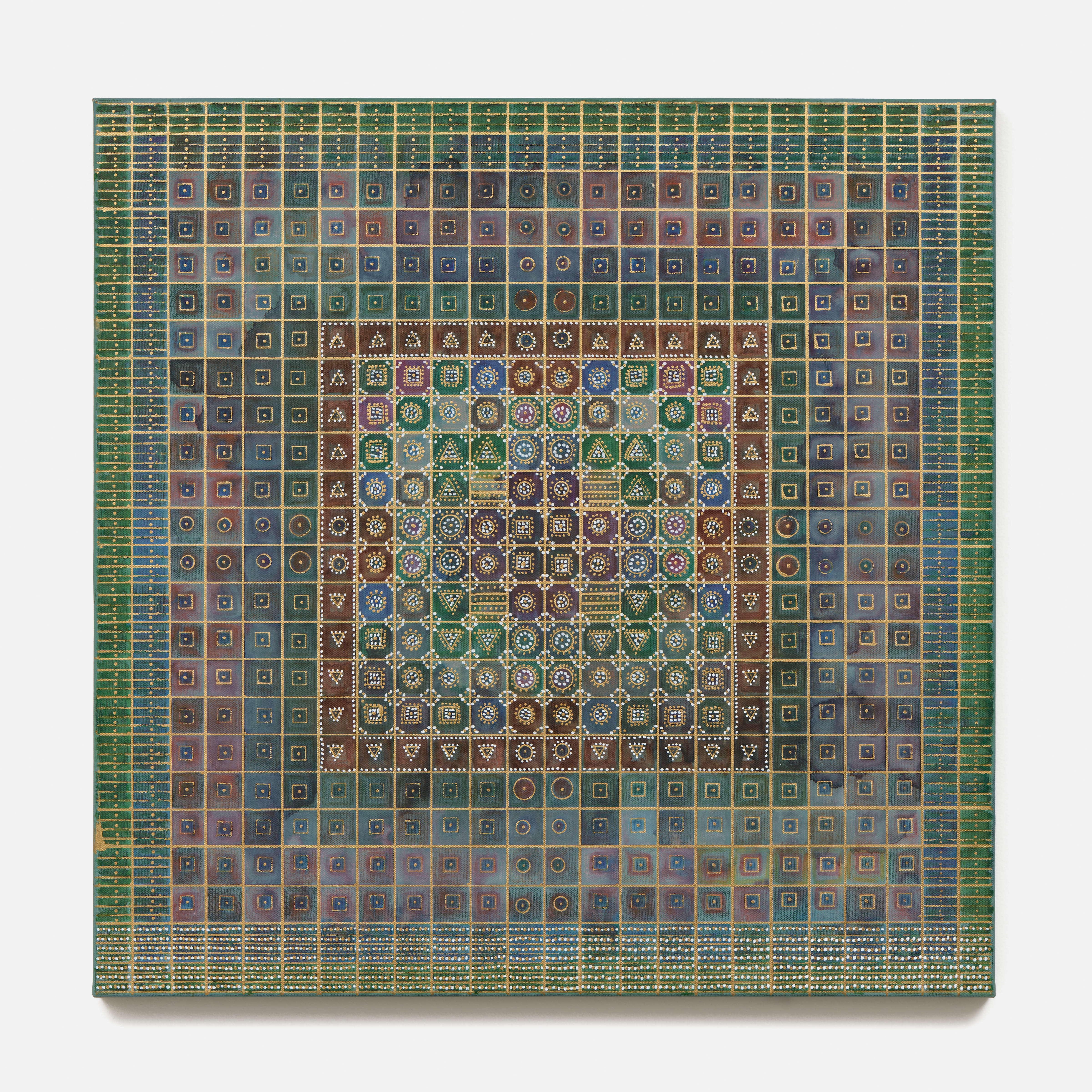
Photo courtesy: Trishla Jain
SP: Can you remember any criticism that you have gotten through your artistic work? What have you learned from such experiences?
TJ: As an artist, criticism is pretty much inevitable — it’s just part of the process of putting your work out into the world. I’ve found that people tend to be very drawn to either my geometric works, represented by Yantra, or my fluid and organic pieces, represented by Tantra. It’s interesting because these two styles represent dualities within my practice: the structured, logical progression of Yantra versus the free-flowing, boundless nature of Tantra. However, it’s common for people to express distaste for whichever style they don’t connect with, often finding it hard to relate to the opposite approach.
I’ve learned that receiving criticism is just part of being an artist, and instead of letting it hold me back, I try to let it push me forward. Criticism can offer valuable perspectives, but I always stay true to my voice and vision. Ultimately, the diversity of responses to my work reinforces the notion that art is subjective, and it’s not about pleasing everyone but about creating something authentic and meaningful.
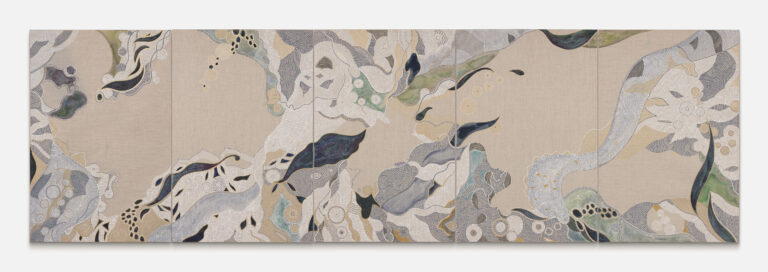
Photo courtesy: Trishla Jain
SP: What advice would you like to give to the young and emerging artists who are trying to find their artistic voices?
TJ: One of the most valuable resources for me, both early in my journey and even now, is the book The Artist’s Way by Julia Cameron. It offers incredibly practical and actionable advice for nurturing your creativity. Two practices from the book that I would recommend to any emerging artist are the Morning Pages and the Artist’s Date.
The Morning Pages involve writing three pages of stream-of-consciousness thoughts first thing every morning. It’s a way to clear your mind of distractions, doubts, and anxieties, and make room for creative ideas to flow. I find this practice invaluable for maintaining a sense of clarity and focus in my art.
The Artist’s Date is equally important — it’s about taking yourself out, alone, to do something that inspires you. It could be visiting a gallery, walking through a flea market, or just spending time in nature. This intentional time allows you to recharge creatively and stay connected to your passions.
Finding your voice as an artist takes time, but these practices can help keep your inspiration and passion alive. Above all, be patient with yourself and trust that your voice will emerge organically through consistent practice and self-exploration.
Image Courtesy: Trishla Jain
Find out more about the artist and her artworks: https://trishlajain.com/


